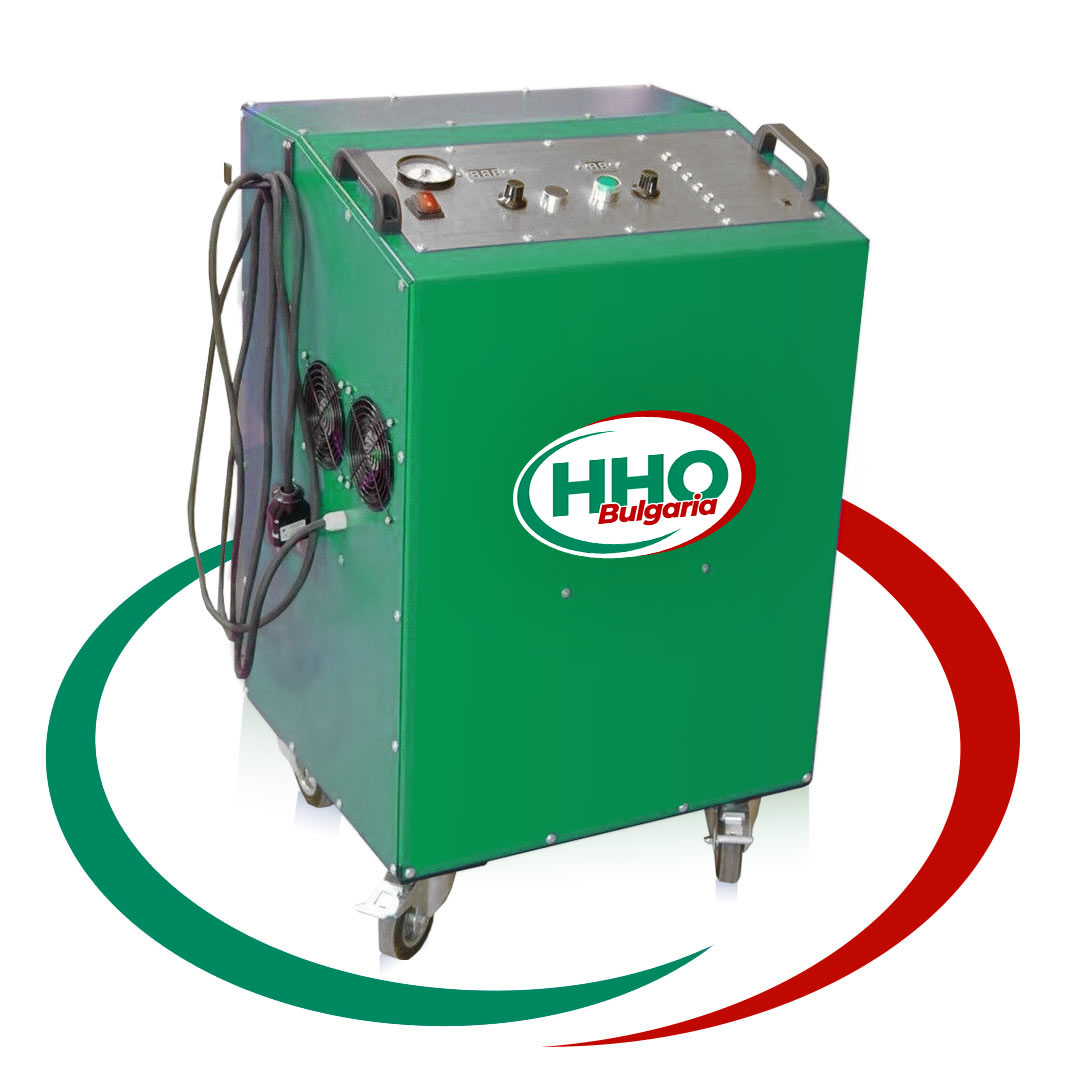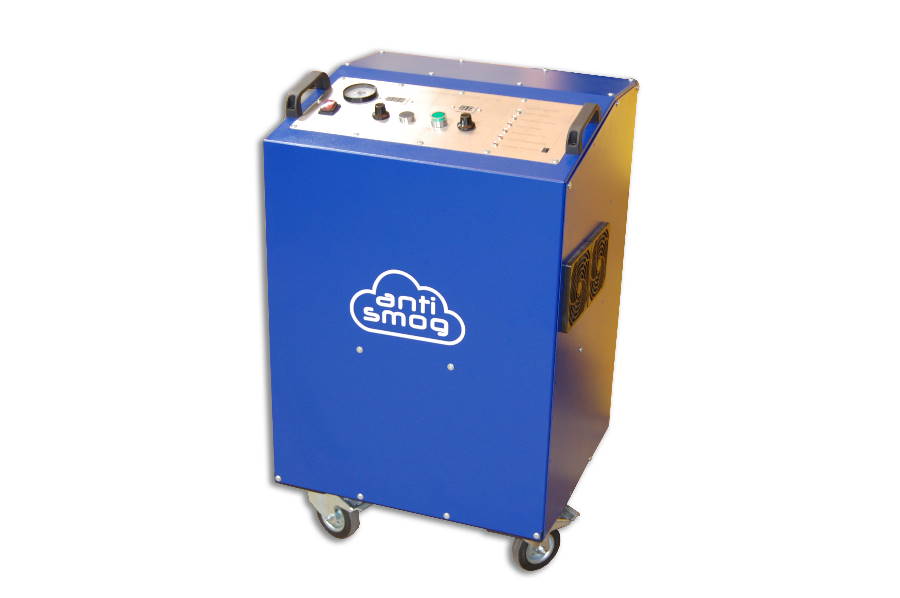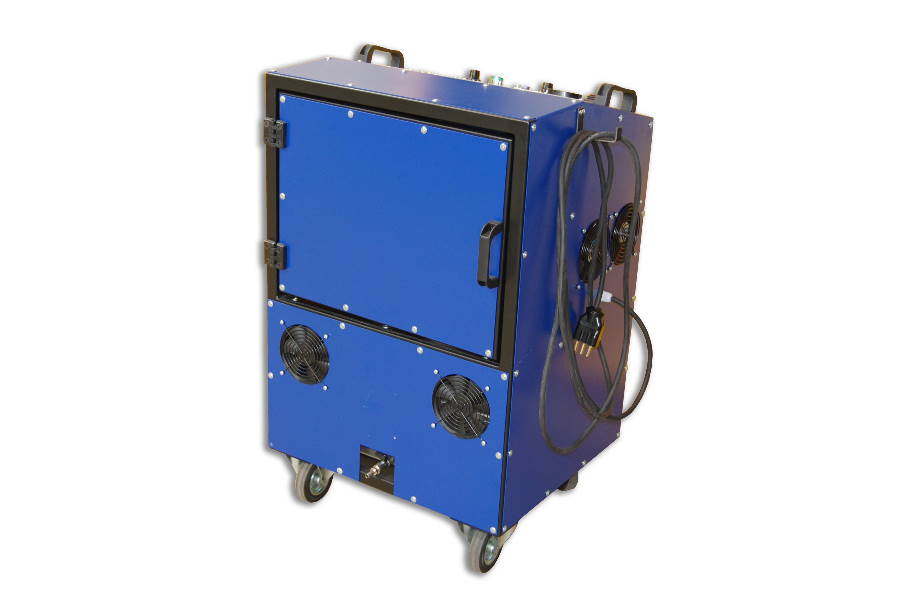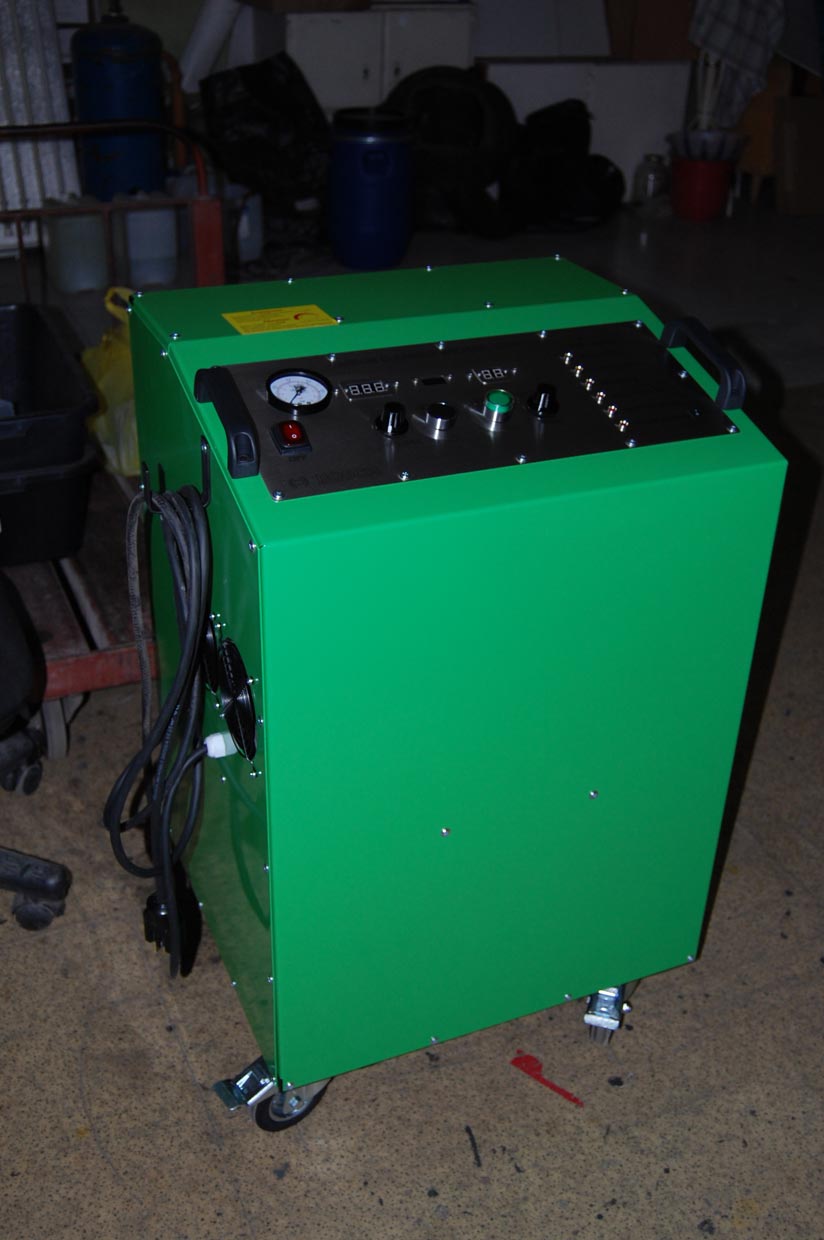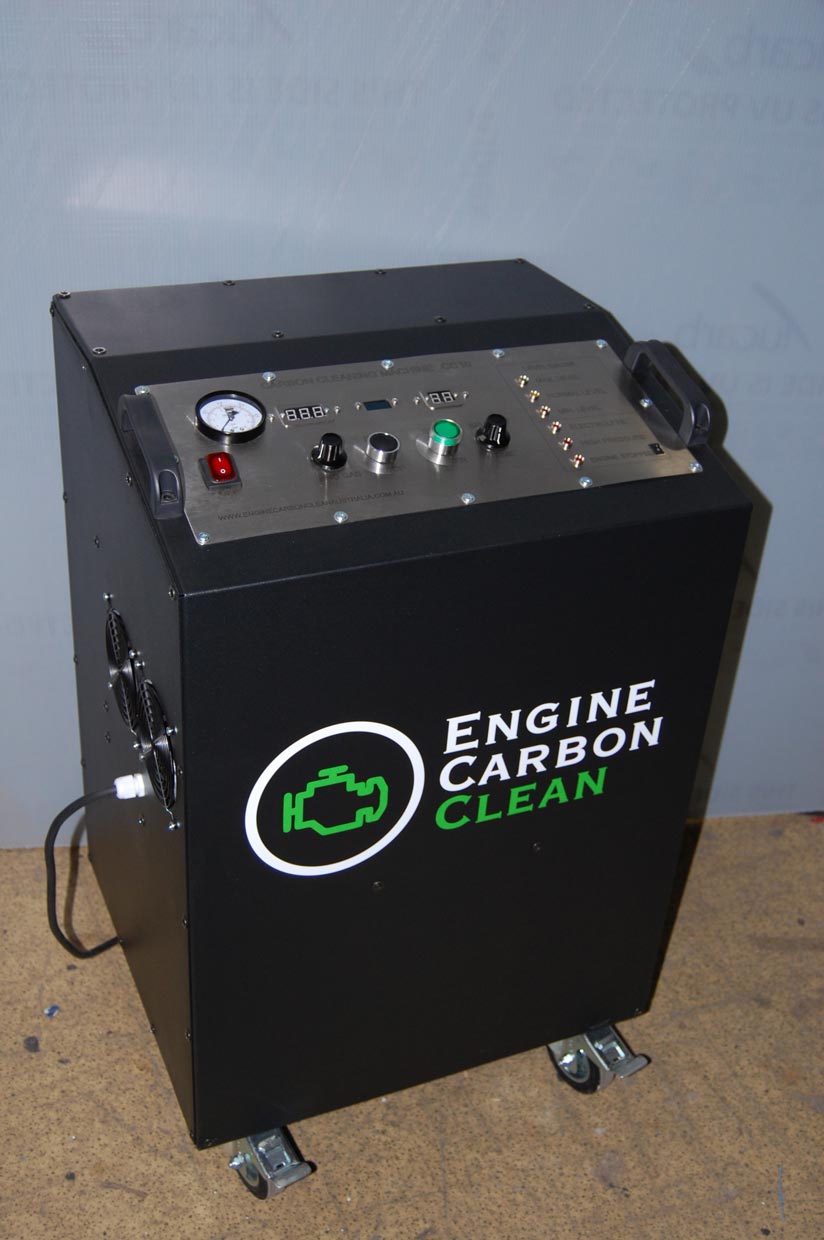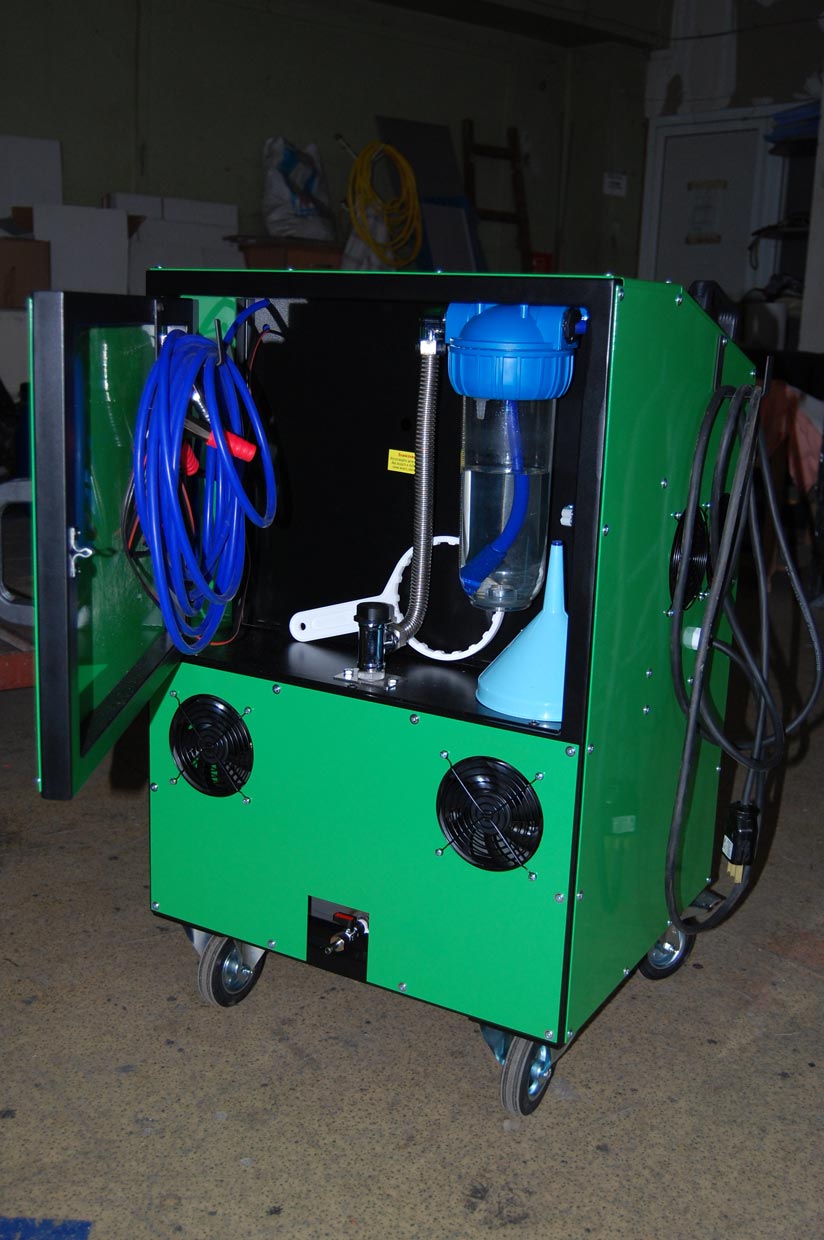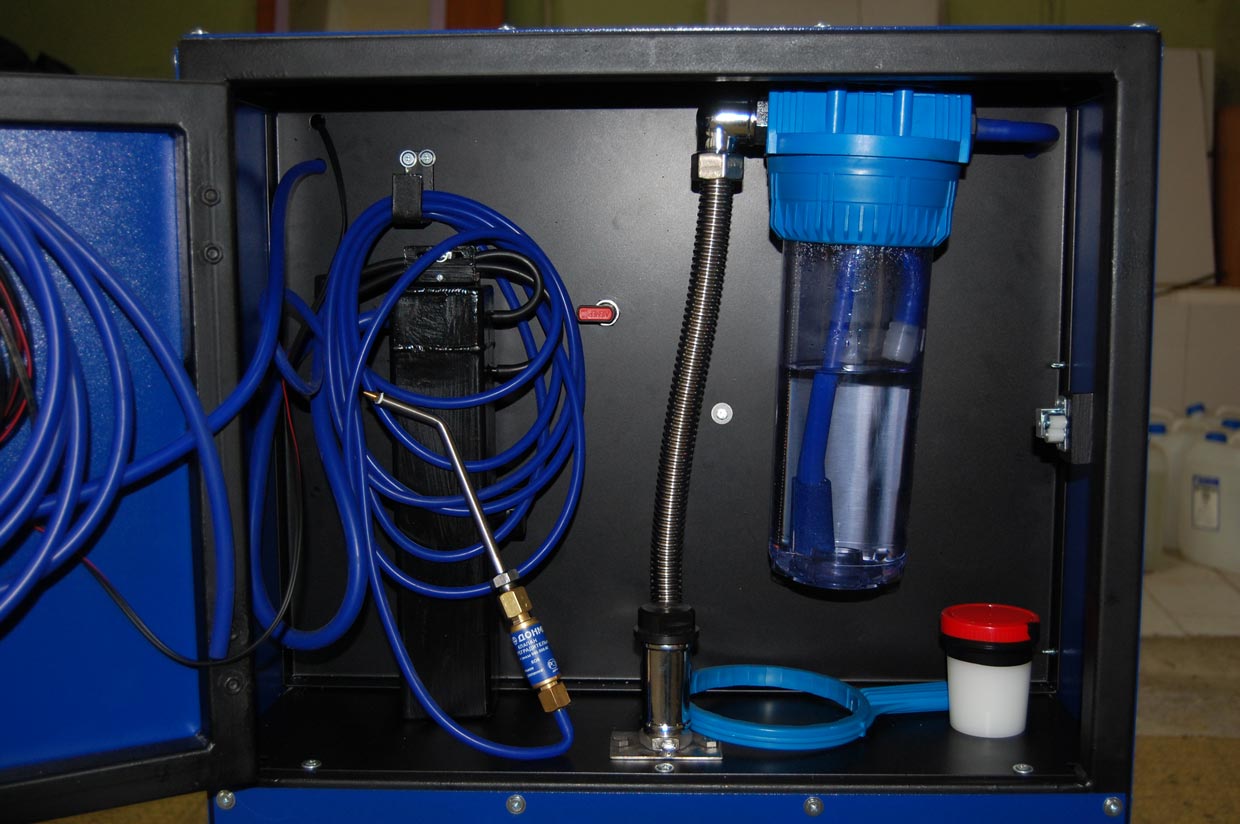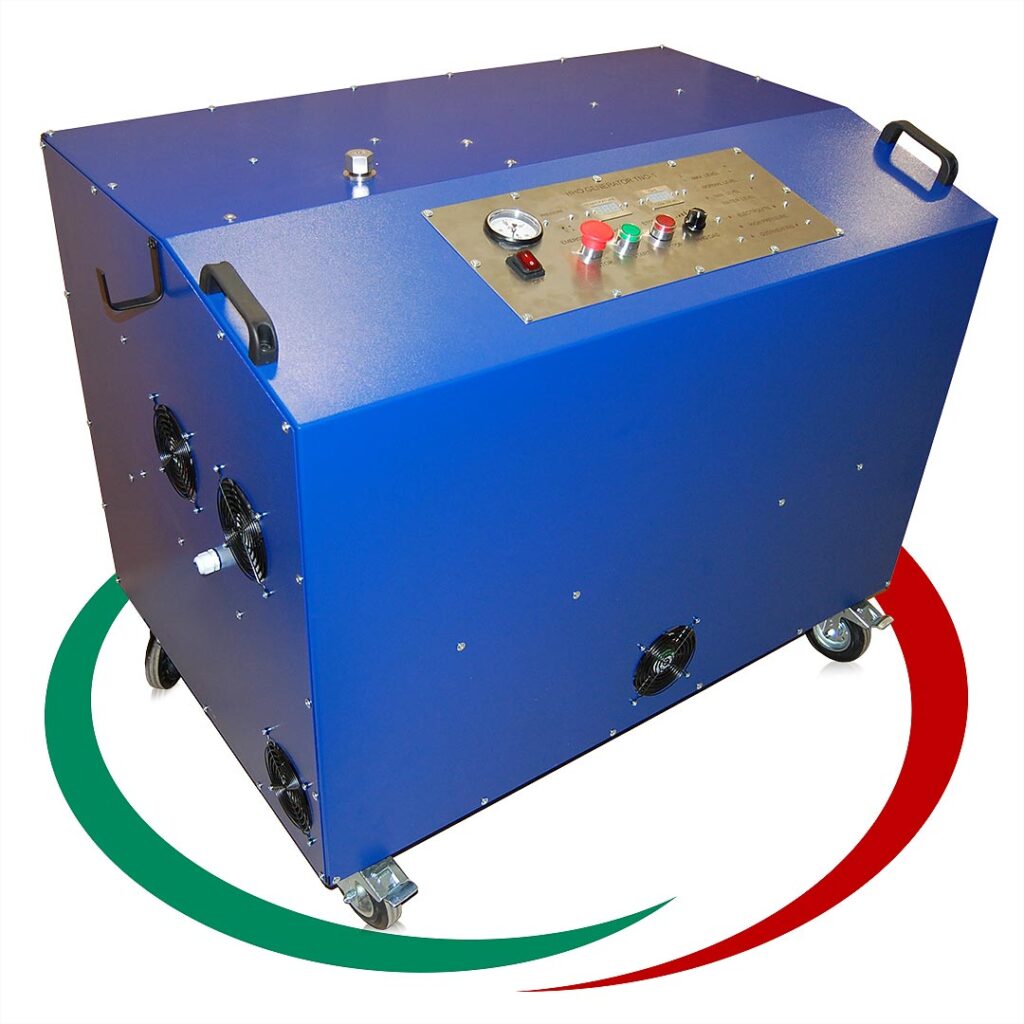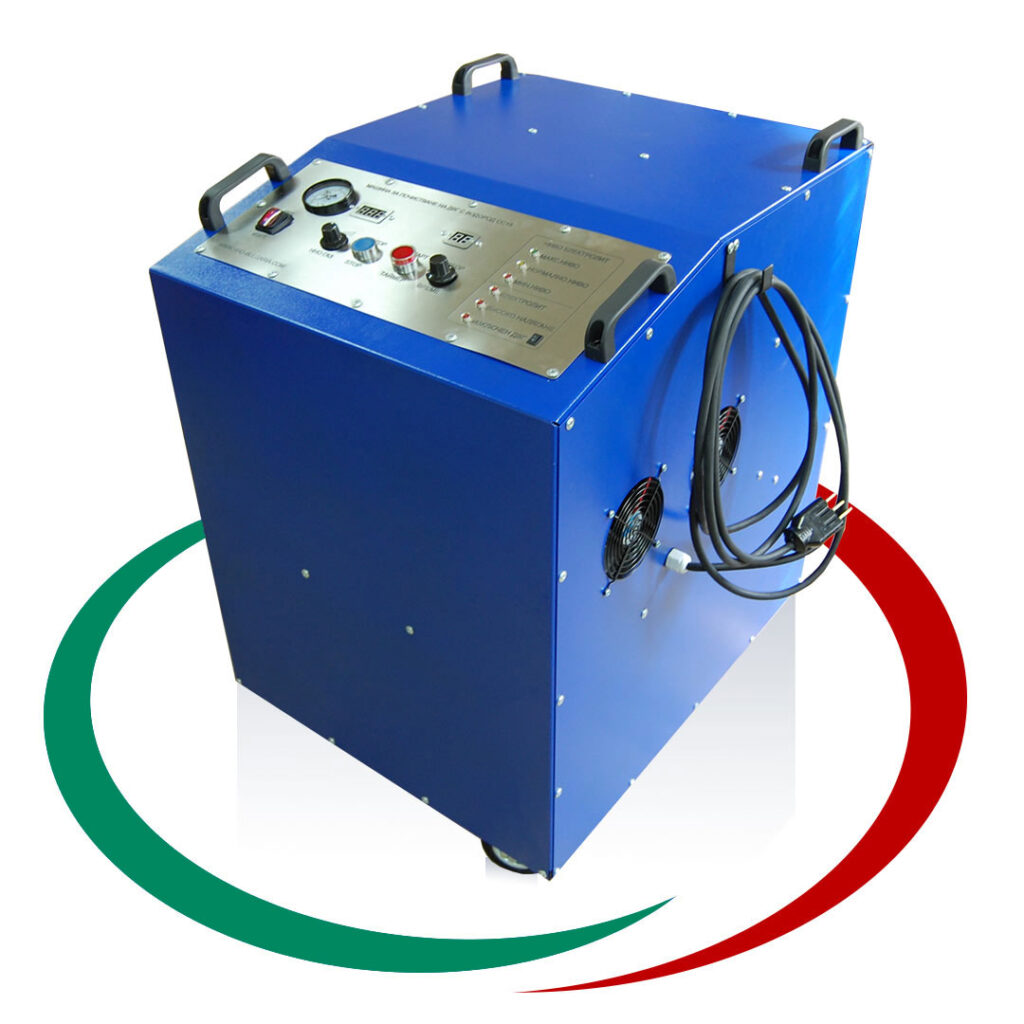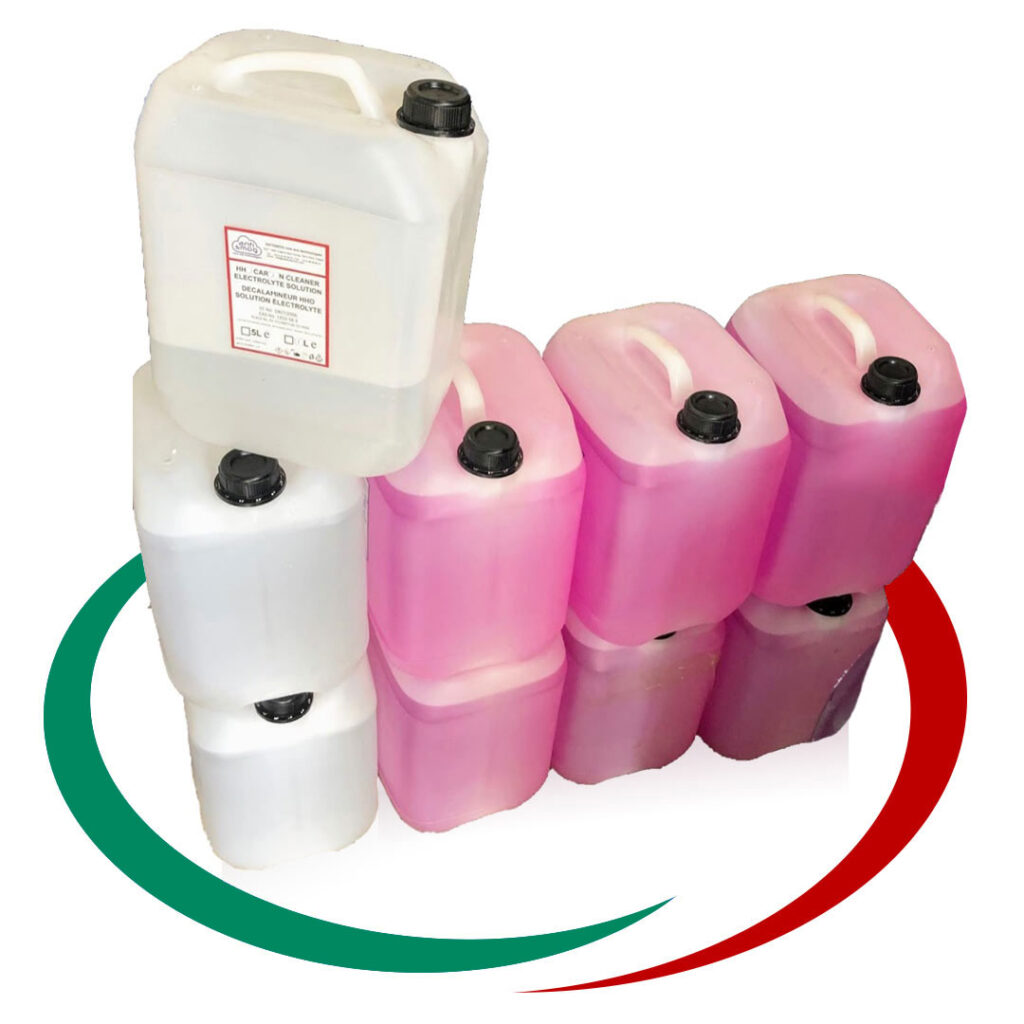Description
Carbon Cleaning Machine
HHO Bulgaria CC10
Equipment :
- HHO production 10 liters per minute max, adjustable
- 25 liter tank capacity electrolyte
- Max water consumption 300 ml per hour
- Made in France
- Size 95 X 54 X 48 cm
- Weight 70 kg empty / 95 kg fully charged
- Power 230 Vac
- Power consumption 1.8 kW max
Functionality:
- Start
- Stop
- HHO production rate
- Cell pressure
- Timer 0-99 minutes
- Alarms and warning indicators
- Auto OFF
- Quality control electrolyte
Safety:
- Low level warning electrolyte (light and audio)
- Low level safety shut down electrolyte
- Motor turning indicator
- Motor stop safety shutdown
- Fire arrestor in line
- Cell fully tested for explosion containment
Service:
- Lifetime warranty
- Lifetime supply of consumables (Subject to contract)
- Future functionality – secure remote access (not offered in this configuration)
What physical or chemical
phenomenon is the basis of
carbon-cleaning with hydrogenoxygen
gas (HHO)?
Context
HHO carbon-cleaning is the process of removing carbon deposits from the internals
of the combustion engine and the exhaust tract – DPF, EGR valve, Catalyst, etc. – by
means of adding a mixture of gaseous Hydrogen and Oxygen (HHO gas) into the
engine air-intake manifold.
The goal of HHO carbon-cleaning is reducing the negative impact of carbon deposits
formation in the engine, in order to reduce harmful exhaust emissions, lower
maintenance cost, and improve fuel efficiency.
Process
The basis of carbon-cleaning of carbon deposits in a combustion engine by HHO
gas, such treatment being primarily applied to the diesel engines, is the chemical
reaction between Carbon and Hydrogen and Oxygen, at elevated pressure and
What physical or chemical phenomenon is the basis of carbon-cleaning with hydrogen-oxygen gas (HHO)? 2
temperature, facilitated by the presence of traces of Nickel and Cobalt, found in
combustion engine block components, as catalysts.
From R. F. Baddour and J. M. Iwasyk:
Reaction of Carbon with Hydrogen and
Oxygen
The chemical reactions between Carbon (C) in solid form, and Hydrogen (H2) and
Oxygen (O2) in active gaseous forms, are:
C + 2H2 → CH4
C + O2 → CO2 (for Carbon valency +4)
2C + O2 → 2CO (for Carbon valency +2)
Simultaneously, in the presence of CO2 and CO, the Sabatier reaction takes place:
CO2 + 4H2 → CH4 + 2H2O
CO + 3H2 → CH4 + H2O
From Stefan Rönsch and Jens Schneider:
Finally, the resulting Methane is combusted together with the fuel, and the resulting
CO2 and the water vapour are mixed with the exhaust gases of the combustion
engine:
CH4 + 2O2 → CO2 + 2H2O
Effectiveness
What physical or chemical phenomenon is the basis of carbon-cleaning with hydrogen-oxygen gas (HHO)? 3
The effectiveness of the carbon-cleaning process can be verified by measuring two
types of parameters:
Short-term parameters – measured immediately after the procedure;
Long-term parameters – measured during weeks or months after the procedure;
Some of the short-term parameters, related to the level of effectiveness of the
process of HHO carbon-cleaning:
Opacity of the exhaust gases ‘Before’ and ‘After’ the process, measured by a
standard opacimeter, in 1/m units;
DPF back-pressure ‘Before’ and ‘After’ the process, measured via an OBD-II
diagnostic tool, in Mpa units;
Airflow through DPF ‘Before’ and ‘After’ the process, measured via an OBD-II
diagnostic tool, in g/sec units;
Soot accumulation in DPF ‘Before’ and ‘After’ the process, measured via an
OBD-II diagnostic tool, in grams;
Visual inspection of engine and exhaust components ‘Before’ and ‘After’ the
process;
Some of the long-term parameters, related to the level of effectiveness of the
process of HHO carbon-cleaning:
Lower fuel consumption, measured over the same period ‘Before’ and ‘After’ the
HHO carbon-cleaning;
Lower maintenance cost, linked to reduced number of issues with DPF, EGR
valve, etc.
Further reading
The reaction of Carbon with Hydrogen at High Pressure. JD Blackwood.
https://doi.org/10.1071/CH9590014
The reaction between carbon and the products of hydrogen, oxygen and water
microwave discharges. F.J Vastola, P.L Walker Jr., J.P Wightman.
https://doi.org/10.1016/0008-6223(63)90004-6
Reaction of Hydrogen Atoms with Solid Carbon. G. M. HARRIS, A. W.
TICKNER.
What physical or chemical phenomenon is the basis of carbon-cleaning with hydrogen-oxygen gas (HHO)? 4
https://doi.org/10.1038/160871a0
Sabatier reaction
https://en.wikipedia.org/wiki/Sabatier_reaction
Review on methanation – From fundamentals to current projects. Stefan
Rönsch, Jens Schneider, et al.
https://doi:10.1016/j.fuel.2015.10.111

